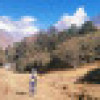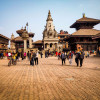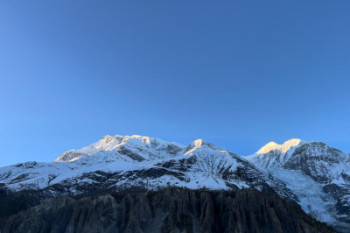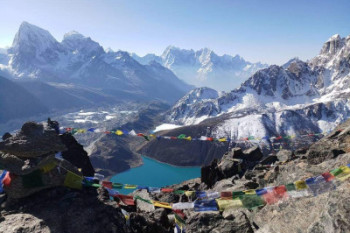
Experience the best of both worlds with our Chisapani Nagarkot hike tour. Enjoy a guided city tour of UNESCO heritage sites in Kathmandu before embarking on a short trek. Explore lush forests, springs, and stunning views of the Himalayas from Chisapani and Nagarkot. Conclude the trip with a visit to Changu Narayan Temple and the historic city of Bhaktapur. Rejuvenate your body and mind on this unforgettable journey.
Trip Highlight
- Insightful tour of major UNESCO World Heritage Sites in Kathmandu valley.
- Two days of hiking around the Kathmandu valley, walking through beautiful landscapes enjoying Himalayan views.
- Sunrise view from one of the best hillstations in Nepal, Nagarkot.
- Visit oldest temple Changu Narayan of 5th century.
This tour package with Chisapani Nagarkot hike is an ideal short and sweet plan for those who desire not to go far away from city but still want to walk through mountains and view Himalayas. The hike is also a perfect year-round getaway from the busy city life of Kathmandu. It is a short hike that can be completed in a weekend and is ideal for both tourists and locals who want to rejuvenate their body and mind.
The tour starts with a guided city visit of major UNESCO listed world heritage sites in Kathmandu valley. On second day, an hour drive will take you to Sundarijal to start your short and sweet trekking. From there, it takes around 4-5 hours to reach Chisapani, which is located in Shivapuri Nagarjun National Park. The trail passes through beautiful forests and springs, making it a popular picnic spot for city dwellers. At Chisapani, you will be able to see a glimpse of the Himalayan range, which is just a teaser for the spectacular views to come!
On the second day of the hike, you will walk through more forests to reach Nagarkot, which takes approximately 7 hours. This town is also a great escape from the city and offers stunning views of the Himalayas. Sunset and sunrise are particularly breathtaking, and waking up early is recommended for the best experience.
After breakfast, the trail goes down from Nagarkot to Changu Narayan which takes around 4 hours. While walking down through, the view of valley will be just awesome to observe. You will have the opportunity to explore the Changu Narayan Temple, which is dedicated to Lord Vishnu, before driving to Bhaktapur. This hike is a great reminder of the natural beauty of Nepal and a wonderful way to experience the Himalayas.
Places Visited:
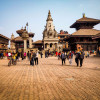
Kathmandu
kathmandu, Nepal
Activities:
Arriving in Kathmandu by flight offers an unforgettable experience with breathtaking views of the Himalayan mountain range. At Tribhuwan International Airport (TIA), situated at 1350m altitude, you can obtain your Nepal entry visa upon arrival. Processing time may vary depending on the queue. Our company representative will warmly welcome you at the airport, holding a placard with our logo, and present you with a Tibetan scarf. A private vehicle will take you to your hotel in Thamel, a vibrant area with diverse dining, shopping, and accommodation options. After resting, we'll provide a trip briefing and invite you to a welcome dinner before you spend the night at the hotel.
Show more...Places Visited:
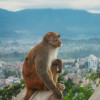
Swayambhunath
kathmandu, Nepal
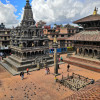
Patan Durbar Square
kathmandu
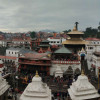
Pashupatinath
kathmandu
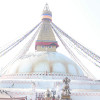
Bouddha Stupa
kathmandu
Activities:
Kathmandu guided city tour includes four major UNESCO world heritage sites in Kathmandu valley, major civilizational attractions. These four sites give you wonderful insights to various aspects of different religious/spiritual/historical segments of Nepalese society in both past and present.
Swoyambhunath tells you the story of how present day Kathmandu valley, then Nag Daha (Snake Lake), was converted in to wonderful place of human settlement from Himalayan Buddhist’s perspective. Patan Durbar square is a reflection of magnificent arts and architecture that existed in and around the valley in the recent and distant past. Pashupatinath temple narrates you the tale of Sanatan dharma (understood as present day Hinduism) in Kathmandu valley as to how it originated and evolved throughout various time periods. It also illustrates how this site is profoundly linked to all Hindus worldwide. Bouddha Stupa represents another facet of Himalayan Buddhism and its evolution throughout the history and also gives you a clear picture of how Tibet and Nepal are deeply connected through this site.
Swoyambhunath
- holiest Buddhist stupas in Nepal
- World Heritage Sites
- Literally meaning "self- created"
- Praised and meditated by many Buddhas: Shikhi, krakuchhand, kanakmuni, Shakyamuni, Manjushri
- Excellent view of the Kathmandu valley The distance is about 3.9km from Thamel takes around 15min in private vehicles.
Swayambhu has been listed in the World Heritage Sites. The entire valley was an enormous lake, nagdah, out of which grew a lotus with five colored flame (self-arisen). Lotus was transformed into a hill and the flower became the stupa. It is still believed that the self-arisen flame is covered with dome of Stupa. The place is known as Swayambhu, meaning "Self-Created" over which a stupa was later built. Swayambhu is among the oldest religious sites in Nepal known as 'monkey temple' because of the large tribe of roaming monkeys. Located at one of the highest elevations in Kathmandu Valley gives panoramic views of the city. The place is praised by Buddha and meditated by several Buddha's as a pure holy site. We'll see three enormous shining golden statues of Sakyamuni Buddha, a four-armed Chenresig and Guru Rinpoche, built-in 2003. The site has two access points: a long staircase contains 365 steps leading directly to the main platform of the temple and vehicle road around the hill from the south leading to the south-west entrance. The first sight on reaching the top of the stairway is the enormous Vajra. The first earthly element facing the stupa on left is a small building contains one of the five elements placed in cardinal points around Swayambhunath. There are many small shrines with statues of Tantric and shamanistic deities, prayer wheels for the Tibetan Buddhists. The stupa represents Buddha’s mind. It offers peace, freedom, and joy and ultimately helps to obtain perfect enlightenment. Huge prayer wheels and fine Buddhist paintings are displayed in the monasteries, as well as the largest Buddha statue in the country. The stupa consists of a dome at the base; above the dome, there is a cubic structure with the eyes of Buddha looking out over the valley. The stupa has stood as a hallmark of faith and harmony for centuries with Hindu temples and deities incorporated in this Buddhist site. Visitors walk around the stupa and recite mantras, make offerings, turn prayer-wheels and make wishes for the benefit of all beings. Near the stupa left at the corner is a small red brick building has Swayambhu Buddhist museum. There is a collection of Buddhist statues and items. Hariti Temple (Ajima Temple) is a two-tiered gilded Newari style temple. Harati is the Buddhist goddess for the protection of children against infectious diseases, protectress deity of Swayambhu, and the deity of wealth.
Patan Durbar Square
- City of fine arts, Golden Temple, Mahabuddha.
It is one of the three medieval cities in Kathmandu and a destination of fine arts has hundreds of fascinating Hindu and Buddhist monuments scattered in and around. Patan City is an enchanting mixture of palace buildings, artistic courtyards, and former palace complex. Most of the monuments are back to the medieval Malla period 15th to 17th century as the golden period of Nepalese art and architecture. Krishna Mandir- a stone temple of Lord Krishna with its 21 spires and bas-relief art depicting scenes from the Mahabharata and Ramayana epics. In addition to this, the main highlights are the Golden temple, Rudravarna Mahabihar and Patan mahabuddha, an exemplary Buddhist monumental sites in Patan. The background, story and history of these sites will amaze you while witnessing a living history. The stories behind the development of different segment in Buddhism, Bajrayan, which is a typical Newari Buddhist practice in Kathmandu valley. Patan is also the center of wooden and metal artifacts.
Pashupatinath Temple
- Most sacred Hindu temple
- Famous for the shrine of lord shiva
- Two-storied pagoda temple
Pashupatinath Temple is one of the most sacred Hindu temples of Nepal located at the banks of holy Bagmati River. Every year this temple attracts hundreds of elderly followers of Hinduism. The place for different festival like Maha Shivaratri and Teej where thousands of devotees celebrate. The temple is the ultimate pilgrimage for Hindus throughout the world. The area is swarmed in by the Hindus from different part of the country. The two-storied pagoda temple of Pashupathinath houses the five-faced statue of Lord Shiva. Apart from the main shrine, there are numerous temples dedicated to different god and goddess in and around the Pashupatinath temple area. This temple is an important destination for art historians. It displays a variety of temple design some of which are Dome style, Pagoda style, Shikhara style and so on. Additionally, there are varieties of statues and sculptures around the complex. There are statues made of stone, metal, and wood. The door and pillars around the temple area are carved in beautiful shapes of God and griffins. The temple is built in the pagoda style of architecture, with cubic constructions and carved wooden rafters on which they rest, and two-level roofs made of copper and gold. After we continue to Boudhanath Stupa which is 2.3km from here takes around 15min to reach.
Boudha Stupa
- The largest stupa in the world
- Most sacred Tibetan Buddhist site
- The ancient trade route from Tibet
- The woman built the stupa and was completed by her four sons
- Stupa contains a relic of Kashyap Buddha On the rooftop restaurant and enjoy the calm and peaceful ambience with a cup of coffee.
Boudha stupa is the largest and most sacred Tibetan Buddhist site outside of Tibet forming a religion and culture hub for the Tibetan and people from the Himalayas of Nepal. The Stupa was on the ancient trade route from Tibet. The Stupa is claimed to have the relic of Kasyapa Buddha, the third Buddha of the Bhadrakalpa. Boudha Stupa, a UNESCO World Heritage Site significant for its historic and architectural significance, with sprouting monasteries and craftsmanship. It is said that the stupa is built by the mother Jyajhima, a poultry woman. She was very poor despite her poverty she had an intense desire for building a stupa. The mother passed away after she completed up to the vase, the dome-like structure. She had four sons, and the construction of the rest of the Stupa was completed by four sons. After they finished it, they all stood up in front of it and made prayers. Everyone made their wishes. When they were praying, all the buddhas and bodhisattvas were absorbed into the stupa, which is why the name of the stupa is also “All-Encompassing.” The stupa is a semicircular white dome and the towering spire, with unblinking eyes painted on each side that stares into the four directions. The overall shape represents a Buddhist mandala (a cosmological map) and the path towards enlightenment, as well as the mythical center of the cosmos, Mount Meru. The four Dhyani Buddha signifies the crucial points, and the fifth, Vairocana is enshrined in the central white hemisphere of the stupa. The base of the stupa consists of three large platforms, decreasing in size. The square tower is topped by a pyramid with 13 steps, represents the stages that human beings must pass through to achieve nirvana. The triangular shape is the abstract for the elements of fire. Every portion has a symbolic significance: the base, dome, spire, and pinnacle represent the five elements. It is said that the stupa contains a piece of bone from the skeleton of Siddhartha Gautama, the historical Buddha. There are 108 images of Dhyani Buddha at the base of the stupa, accompanied by prayer wheels organized in a group of four or five in 147 different niches. The prayer flags tied on the stupa are believed to carry mantras and prayers towards heaven. The place is quiet and peaceful to find some spiritual connection with this place. Moreover, the sound of singing bowls and Buddhist chants, mixed with the smell of incense burning creates a kind of healing energy. The place allows visitors to delve into the lives of Buddhist monks and nuns who devote their lives to simplicity and non-violence. Boudhanath is the best place to learn about spirituality, meditation and the history of Buddhist philosophy, there is no other place like Boudhanath to visit. Early in the morning and evening time, Buddhist monks in maroon robes are seen circumambulating the stupa with prayer wheels on their hands. Small peripheral of the stupa is surrounded by the Thanka and rituals objects shop. The spot is favorable to explore both the culture and architectural sites. Numerous small stupas are located at the base.
Overnight Stay at Kathmandu.
Show more...Places Visited:
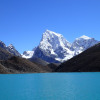
Sundarijal
kathmandu, Nepal

Chisapani
kathmandu, Nepal
Activities:
Following the breakfast, We will take a drive from Kathmandu to Sundarijal, which is located about 15 kilometers away and takes around 35-40 minutes to reach. During our journey, we will have the opportunity to see the Sundarijal waterfall and water shed that supply water to Kathmandu Valley. As we make our way to Chisopani via Mulkharka, we will also pass by Tamang Village. Once we reach Mulkharka, we will enter a deep forest and hike for approximately 4-5 hours until we arrive at Chisopani, which means "cold water." We will be staying overnight at a lodge in Chisopani.
Show more...Places Visited:
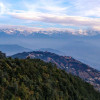
Nagarkot
Bhaktapur, Nepal
Activities:
Today's itinerary involves continuing the hike through the Shivapuri Nagarjun National Park and forest land, where there is a chance to spot a variety of wildlife such as the Himalayan black bear and Indian leopard. However, it is more likely that you will come across smaller animals like the mongoose, porcupine, jungle cat, pangolin, and several bird species, including the yellow-throated marten, if you are an avid birdwatcher. We will have lunch in either Chauki Bhanjyang or Jhule settlements along the way before proceeding towards Nagarkot to catch the sunset over the Himalayas. There are various places to enjoy the views, including a watchtower or other scenic locations. After that, we can have a delicious dinner at one of the many hotels available in this popular hill station, ranging from budget-friendly to luxurious options.
Show more...Places Visited:
Activities:
The morning of the next day is a highly anticipated event on the trek - witnessing the sunrise over 8 of the 13 Himalayan ranges. It's a mesmerizing experience to watch the sun rise over the mountains, with clouds playing hide-and-seek, revealing the stunning peaks. You can savor a hot breakfast amidst the crisp and cool air while enjoying the breathtaking view. After the sunrise, we will embark on a trek towards Changu Narayan Temple, which takes around 4 hours, mainly downhill. Changu Narayan Temple is an ancient temple dedicated to Lord Vishnu and is believed to be the oldest temple in Nepal. Though the Changu Narayan Monument Zone was badly damaged by the 2015 earthquake, efforts are being made by UNESCO and other organizations to restore it. In addition, there is an interesting living museum near the temples that remains untouched by the earthquake, providing a glimpse into Nepali and Newari culture, art, and history. After the brief visit of this temple, we will drive towards Bhaktapur where we will visit ancient as well as magnificent Bhaktapur Durbar square, observe different aspect of it throughout the history. This site’s visit comes up as wrap up of our short and sweet trip, then we will drive back to Kathmandu where we will officially organize for you a Nepalese cultural farewell dinner. Overnight stay in Kathmandu.
Show more...Activities:
One of our office representatives will accompany you to the airport for your departure. It's time to bid farewell, and we look forward to the possibility of seeing you again in the future.
Show more...Inclusions & Exclusions
Show more...- Airport pick up & drop off in private vehicle
- Three star category Hotel accommodation in Kathmandu with BB plan.
- All necessary paper works
- Neat & clean basic level accommodation with BLD plan during Trek
- All local taxes.
- All necessary ground transportation in a comfortable private vehicle
- Kathmandu valley sightseeing with professional English speaking Tour Guide
- First air kit box.
- Government registered Tour Guide throughout the trip
- Heritage Sites Entry Fee
- Nepal entry visa fee & international airfare.
- Hotel upgrade & any other add on.
- Extra stay in Kathmandu.
- Personal expenses: phone calls, internet, laundry, alcoholic beverages, soft drinks.
- Private & customized trip.
- Tip for guide & porter.
- Filming devices: camera, drone, permit fee.
- All those not included in the list of inclusions.
- Personal Travel Insurance
- Lunch & Dinner
No reviews yet
Similar Tours
Embrace Adventure: Elevate Your Travel Experience with Our Irresistible Tours!
Everest Base Camp through Gokyo Lake
Embark on the iconic Everest Basecamp trek, experiencing the must-do adventure that captivates thousands annually....
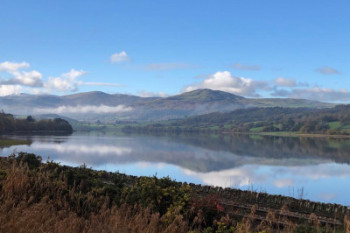
19 days | 18 nights
$ USD 1650
Annapurna Circuit Trek
Experience the allure of one of the world's iconic long-distance trekking trails, renowned for its breathtaking...

